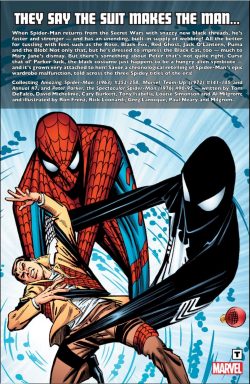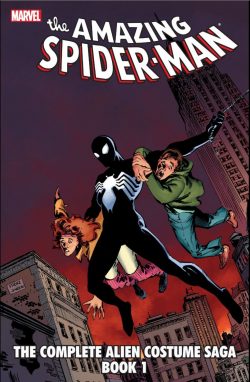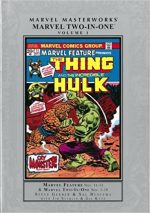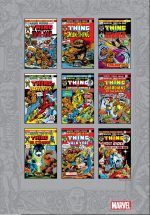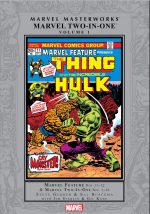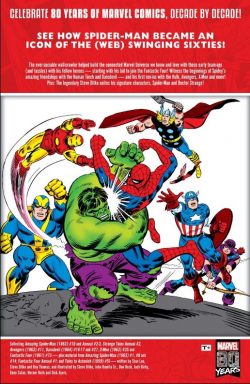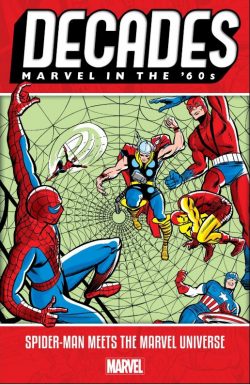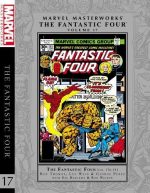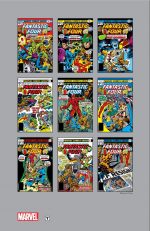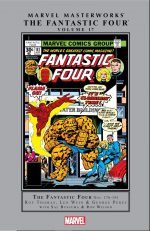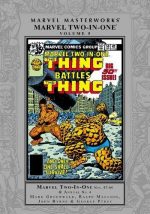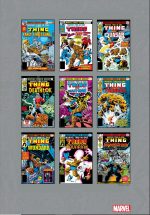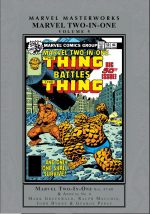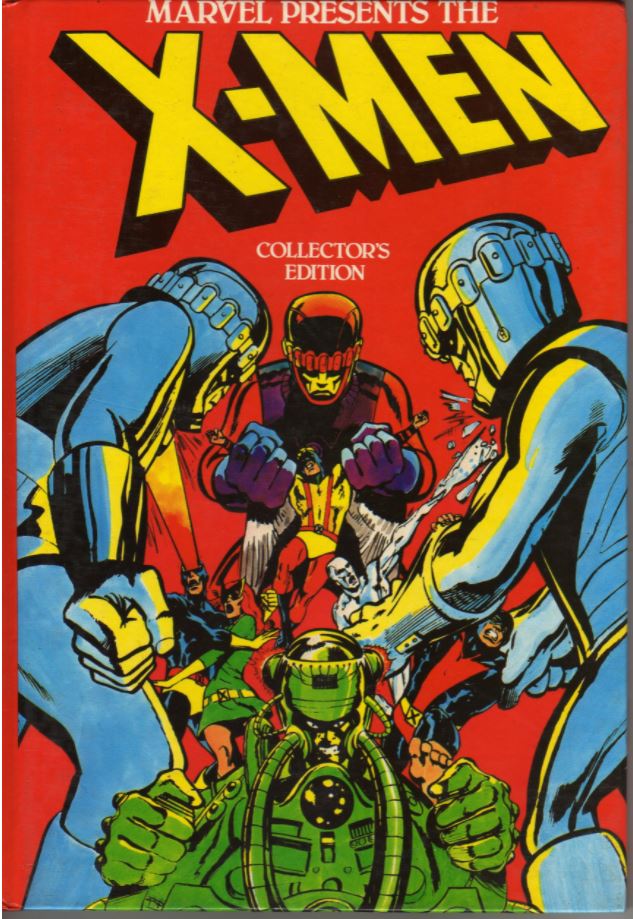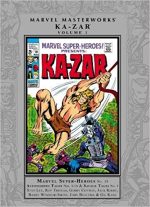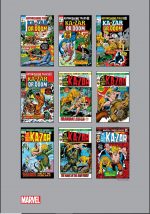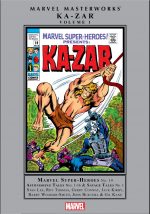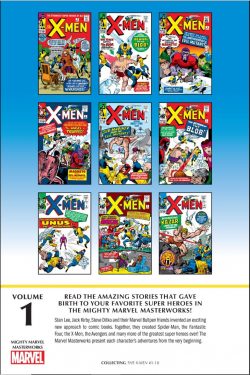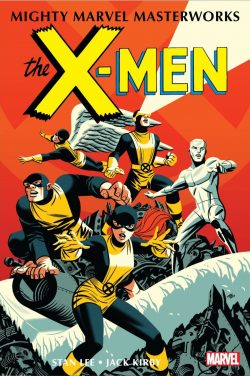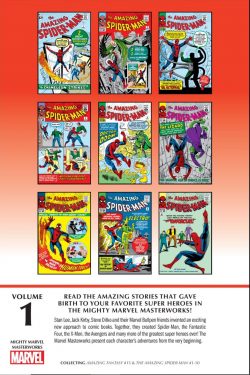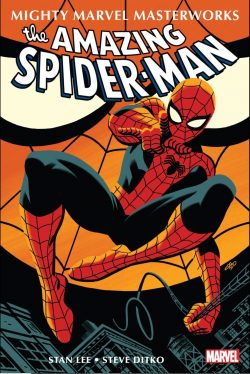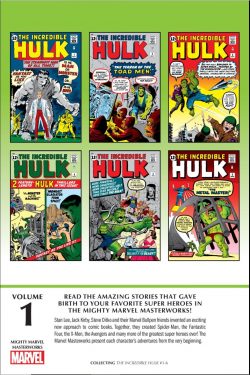
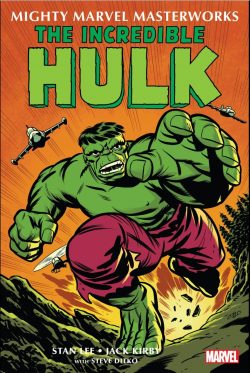
By Stan Lee & Jack Kirby, with Steve Ditko & various (MARVEL)
ISBN: 978-1-3029-3180-3 (TPB)
Their stories are timeless and have been gathered many times before, but today I’m once more starting with format. The Mighty Marvel Masterworks line launched with economy in mind: classic tales of Marvel’s key creators and characters re-presented in chronological order. It’s been a staple since the 1990s, but always in lavish, hardback collectors editions. These editions are cheaper, on lower quality paper and – crucially – smaller, about the dimensions of a paperback book.
Your eyesight might be failing and your hands too big and shaky, but at 152 x 227mm, they’re perfect for kids. If you opt for the digital editions, that’s no issue at all…
1962 was a big year for burgeoning Marvel with plenty of star debuts who all celebrate six decades of glory this year. Most oldsters will cite the Amazing Spider-Man as the most significant premier, but this guy can probably claim equal star status…
Spanning May 1962 to March 1964, and collecting the Jade Juggernaut’s earliest appearances and first run, this tiny-yet-titanic Trade Paperback tome (also available in digital editions) gathers Incredible Hulk #1-6: a short, bright burst of monster chic that was ahead of its time but nonetheless laid the ground for more than half a century of cathartic fun…
The Incredible Hulk was Marvel’s second superhero title, although technically Henry Pym debuted earlier in a throw-away yarn from Tales to Astonish #27 (January 1962). However, he didn’t become actually become a costumed hero until the autumn, by which time Ol’ Jade Jaws was not-so-firmly established.
Firmly channelling comics’ still-popular atomic monster trend, The Hulk smashed right into his own bi-monthly comic but, despite some stunning action romps by Young Marvel’s finest creators, crashed right out again. After six issues, the series was cancelled and Editor Stan Lee retrenched, making the Gruff Green Giant a perennial guest-star in other Marvel titles until such time as he could restart the drama in their new “Split-Book†format. That came when the monster stomped into Tales to Astonish where Ant/Giant-Man was proving to be a character who had outlived his time.
Without more preamble then, let’s go…
Cover-dated May 1962, the Incredible Hulk #1 sees puny atomic scientist Bruce Banner – sequestered on a secret military station in the desert – perpetually bullied by bombastic base commander General “Thunderbolt†Ross as the clock counts down to the world’s first Gamma Bomb test. Besotted with Ross’s daughter Betty, Dr. Banner stoically endures the General’s constant jibes as the timer ticks on and tension increases.
In the final moments, Banner spots a teenager lollygagging at Ground Zero and frantically races to the site to drag the boy away. Unknown to everyone, the assistant he’s entrusted to delay the countdown has an agenda of his own…
Rick Jones is a wayward but good-hearted kid. After initial sassy-mouthing, he lets himself be pushed into a safety trench, but just as Banner prepares to join him The Bomb detonates…
Somehow surviving the blast, Banner and the boy are secured by soldiers, but that evening, as the sun sets the scientist undergoes a monstrous transformation. He grows larger; his skin turns a stony grey…
In six simple pages that’s how it all starts, and no matter what any number of TV or movie reworkings or comic book retcons and psycho-babble re-evaluations would have you believe, it’s still the best and most primal take on the origin. A good man, an unobtainable girl, a foolish kid, an unknown enemy and the horrible power of destructive science unchecked…
Written by Lee, drawn by imaginaut-on-fire Jack Kirby and inked by veteran Paul Reinman, ‘The Coming of the Hulk’barrels right along with the man-monster and Jones subsequently kidnapped by Banner’s Soviet counterpart the Gargoylefor a rousing round of espionage and Commie-busting.
For the second issue, the plot concerns invading aliens, and the Banner/Jones relationship settles into a traumatic nightly ordeal as the good doctor transforms as darkness comes, and is locked into an escape-proof cell whilst the boy stands watch helplessly. Neither ever considers telling the government of their predicament…
‘The Terror of the Toad Men’ is formulaic but viscerally and visually captivating as Steve Ditko inks Kirby: imparting a genuinely eerie sense of unease to the artwork. Incidentally, this is the story where the Hulk inexplicably (to us readers at the time) changed to his more accustomed Green persona.
Although cleverly back-written years later as a continuing mutation, the answer was simply commercial: the grey tones of the monster printed unreliably and erratically on the cheap newsprint pages, causing problems for production colourists so it was arbitrarily changed to the simple and more traditional colour of monsters: a far more tractable shade of green…
The third issue presented a departure in format as issue-long, chaptered epics gave way to complete short stories. Dick Ayers inked Kirby in the transitional ‘Banished to Outer Space’, which radically altered the relationship of Jones and the monster, and the story thus far was reprised in 3-page vignette ‘The Origin of the Hulk’. A Marvel mainstay of villainy debuted in ‘The Ringmaster’, with the Emerald Apparition literally (please note a term used correctly here) mesmerised into working for a band of criminal performers we now know as the Circus of Crime…
The Incredible One goes on an urban rampage in #4’s first tale ‘The Monster and the Machine’ before sneaky Commies masquerade as invading aliens in second escapade ‘The Gladiator from Outer Space!’
The Incredible Hulk #5 is a joyous exemplar of cataclysmic Kirby action, introducing immortal villain Tyrannus and his under-earth empire in ‘The Beauty and the Beast!’, after which those pesky and incorrigible Commies come in for another drubbing when our Jolly Green freedom-fighter prevents the invasion of Lhasa by ‘The Hordes of General Fang!’; a barely disguised poke at China’s still ongoing occupation of Tibet.
Despite the sheer verve and bravura of these simplistic classics – some of the greatest, most rewarding comics nonsense ever produced – the Hulk series was not doing well, and Kirby moved on to more appreciated arenas. Steve Ditko handled all the art chores for final issue #6: another full-length epic and an extremely engaging one. He would be the penciler when the Monster eventually regained his own solo series…
‘The Incredible Hulk Vs the Metal Master’ offers astonishing action, sly and subtle sub-plots and a thinking man’s resolution, but nonetheless the title (temporarily) died with the issue. After shambling around the nascent Marvel universe for a year or so, first as the odd man out in the Avengers and thereafter as a misunderstood villain/menace, the Hulk eventually got another shot at the big time in Tales to Astonish…
The rest is history and the momentous meat of another volume and review, but this jade-hued journal closes with some welcome traditional extras: original art pages from Kirby and Ditko and a contemporary house ad.
Hulk Smash!
He always was, and with material like this he always will be.
© 2021 MARVEL

